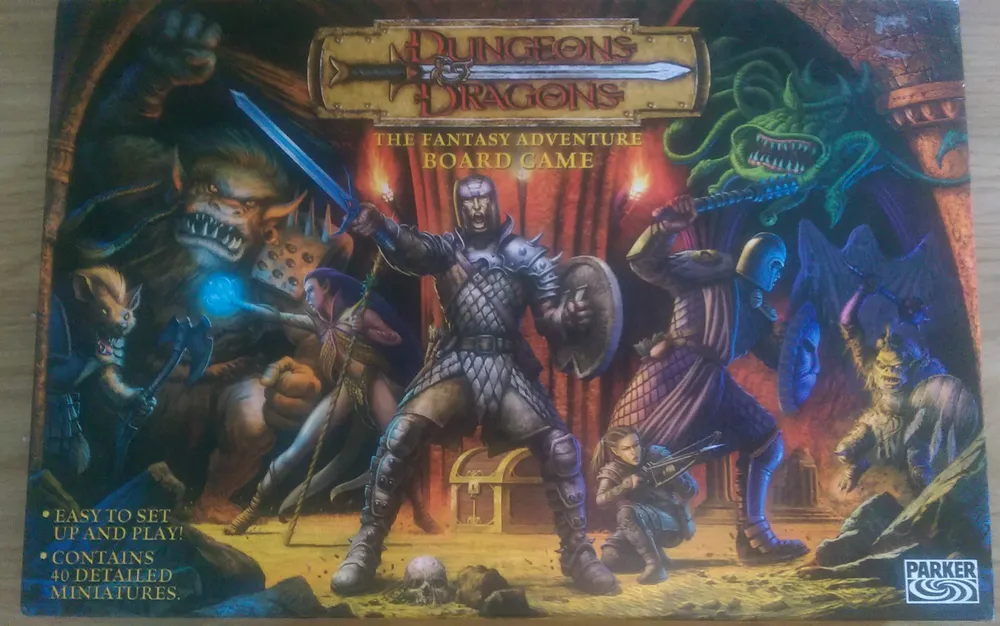Dungeons & Dragons: The Fantasy Adventure Board Game (2003)
Dungeons & Dragons: The Fantasy Adventure Board Game
Dungeons & Dragons: The Fantasy Adventure Board Game is a board game released in 2002 by Parker Brothers, a division of Hasbro. It is based on the role-playing game Dungeons & Dragons (D&D) by Wizards of the Coast.
Why is Dungeons & Dragons: The Fantasy Adventure Board Game Popular?
D&D was the first modern role-playing game and established many of the conventions that have dominated the genre. Particularly notable are the use of dice as a game mechanic, character record sheets, use of numerical attributes, and gamemaster-centered group dynamics. D&D has had a remarkable influence on the gaming industry in general, from board games to video games.
Game Components of Dungeons & Dragons: The Fantasy Adventure Board Game
How To Setup Dungeons & Dragons: The Fantasy Adventure Board Game
Setting up the game involves the Dungeon Master (DM) laying out the map sections using the double-sided gameboards. The DM positions the monsters and doors according to the scenario, while the players place their hero figures in the starting room. The first action is to open the door, which triggers a room setup phase, randomizing the turn order via initiative cards. The DM sets up the monsters and doors in the new room without knowing their place in the turn order until after setup.
Gameplay Mechanics and Game Objective
Player Experience
The game is known for its challenging gameplay, especially for younger players. Many players found the game difficult to win, with the DM often having the upper hand. Despite this, it can be enjoyable for teenagers and older children who are not looking for the complexity of a full role-playing game. The game introduces basic D&D concepts like initiative, armor class, and magic limitations but lacks the depth and role-playing elements of actual D&D.
Pros
Cons
Personal Thoughts on Dungeons & Dragons: The Fantasy Adventure Board Game
This game is ideal for younger players or those new to the world of Dungeons & Dragons, serving as a simpler introduction to the core mechanics. However, it may not satisfy experienced players seeking the depth and complexity of full D&D sessions. It’s a fun, if somewhat simplistic, dungeon crawler that can be enjoyed casually, especially by those who appreciate the nostalgic value or are looking for a lighter take on the D&D universe.
We are supported by our audience. When you purchase through links on our site, we may earn an affiliate commission, at no extra cost for you. Learn more.

